Arts & Wellbeing at TC/ESG25
At TC/ESG25 in Johannesburg, the Creative Arts & Wellbeing program offered powerful spaces to pause, connect, and see the conference themes from new perspectives. From immersive theatre and ocean justice storytelling to hands-on art-making, slow fashion, and quiet spaces for reflection, the program created moments of care and imagination woven throughout the four days.
Exhibitions & Activations
At TC/ESG25, the Arts & Wellbeing program featured a diverse set of exhibitions and activations:
Empatheatre brought unforgettable experiences, including research-based, community-rooted theatre addressing societal challenges through empathetic storytelling. Developed in collaboration with the Stockholm Resilience Centre and the Unruly Natures research project, UNRULY draws from rigorous field research and community engagement with people living on Cape Town’s southern Peninsula. At TC/ESG25, their work included a Meaning ∞ Making workshop, two performances of UNRULY, a performative lecture of Indlela Yokuphila: The Souls Journey, and more.

Among many other highlights, the Film Room showcased short films followed by conversations with the filmmakers, opening dialogue across art, research, and lived experience. The program also featured a screening of Janet Solomon’s award-winning film, Blue Burning, which added a powerful layer to the collective inquiry.

House of INVADE’s Archive of Unheard Solutions transformed the venue into a participatory, postcard-style intervention. Through prompts scattered across the conference spaces, participants surfaced personal memory, ancestral knowledge, and grassroots ingenuity — an activation that reminded us that sustainability is not a trend, but an inheritance.
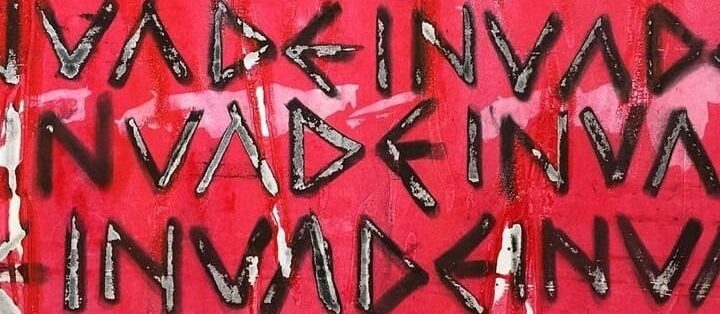
Kate Boswell’s Multispecies Shapeshifters invited participants into a sensory engagement with intertidal ecologies. Through sculptural biocomposites, her work reflected on the porous boundaries between humans and nonhumans, and the ways material transformation can embody relational transformation.

Adriene Jenik’s Climate Future Readings with ECOtarot showcased an artistic and intuitive approach to exploring climate futures through symbolic readings using a hand-crafted tarot deck grounded in climate science, philosophy, and imagination.
Hannelie Coetzee presented her SUNCASA Litter Traps and Art Project, transforming waste into climate adaptation solutions along the Jukskei River, during a plenary session. She also led a tour in Alexandra, guided the Intercontinental Watershed Walk during the GCI Dinner, and showcased a short film during the Thursday showcase.

Estelle Gautier’s The Art of the Anthropocene explores how the grief of climate change mirrors the five stages of dying — denial, anger, bargaining, depression, and acceptance. It also introduced a sixth stage, “Finding Meaning,” as a way to transform grief into reflection and hope.
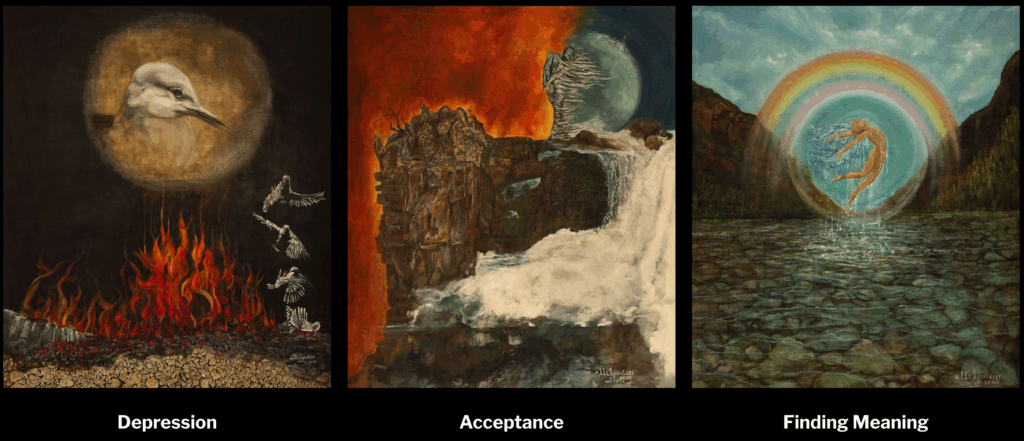
Simangaliso Sibiya & Gopolang Ledwaba’s Umuntu Akalahlwa (“a person is never discarded”) wove together visual narratives of kinship, reclamation, and memory from Soweto. Their installation blended sculpture, portraits, and collaborative projects to honor those often left on the margins, asking how art can help us remember and re-member community.
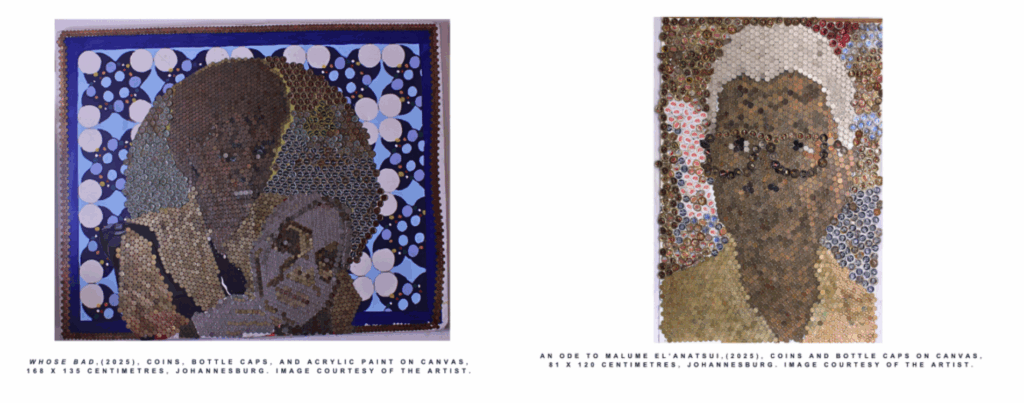
Dylan McGarry’s Our Ocean is Sacred used VR and multi-genre storytelling to surface intangible ocean heritage and highlight struggles for ocean justice in South Africa. The project drew on art as evidence, bridging activism, law, and culture in powerful new ways.
Mia Strand’s The Ocean Isn’t Just Blue reframed our view of the ocean as more than a flat blue surface, but as a multi-hued and multi-storied space — both magical and inequitable. Her photographs sparked conversations about ocean justice and the exclusion of those most dependent on marine ecosystems from ocean governance.

Vanessa Masterson’s Picture This: Conservation Through a Gendered Lens brought forward the lived experiences of biodiversity practitioners in South Africa and Australia through photovoice. Her exhibition asked us to confront the masculinized, exclusionary history of conservation and consider how gender, identity, and inclusivity are reshaping the field.

Stephanie Klarmann’s Held Captive presented a photographic account of South Africa’s commercial predator industry, exposing exploitation and the unsuitable conditions of keeping apex predators in captivity for profit. The exhibition called for decisive action, including a breeding moratorium and a phased closure of the sector.
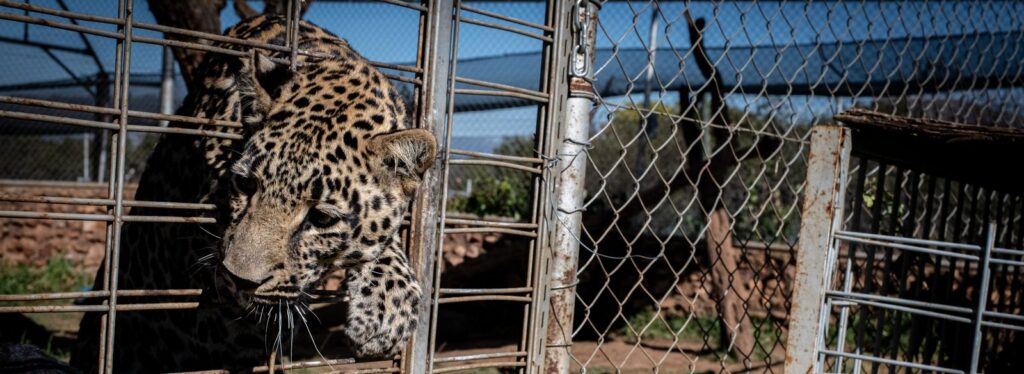
The Antidote’s Live Pop-Up Studio brought together exceptional African artists who collaborate to transform fashion waste into beautiful clothes and accessories. Asanele Mangali, Diddy Mayanda, Haki Mngomezulu, Neo Seletisha, Unathi Mgolombane, and Tlotlo Methane organized by Justine Watterson and Michele Sohn showcased the journey from waste to fashion through creating products live during the conference.
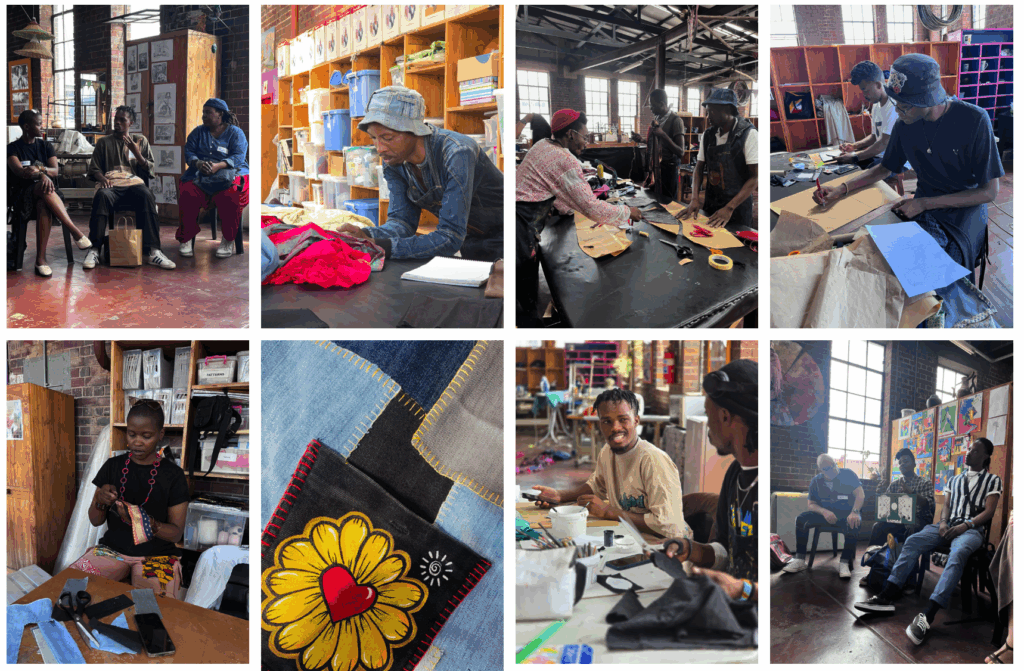
Arts & Wellbeing Sessions
Interactive sessions invited participants to experience transformation through movement, imagination, and creative practice. Sessions ranged from embodied workshops to film, theatre, and land art, opening space for reflection, dialogue, and collective care. Highlights included:
- Art, Land & Spatial Politics — South African and African artists presented case studies on land, history, and spatial justice, interrogating how art and design can respond to the legacies of apartheid and colonial planning.
- Moving with the Elements — an expressive movement practice guiding participants through earth, fire, water, and air as pathways for embodied self-care and collective resilience.
- The Work that Reconnects Spiral Workshop — a group process for honoring ecological grief and moving toward active hope, rooted in deep ecology and systems thinking.
- Inner Development in Academic Education — an experiential session introducing empathy, systems thinking, and the Inner Development Goals framework into sustainability teaching.
- New Academic Moms — an art- and body-based session creating space for mothers in academia to reflect, rest, and connect around the intersections of personal and professional transformation.
- Healing & Finding Meaning through Art — a guided journey through the Art of the Anthropocene exhibition, using grief and “Finding Meaning” as sources of transformation.
- Weaving Connections — a collaborative land art session in a Johannesburg park, inviting participants to create ephemeral works in and with nature.
Wellbeing & Reflection Spaces
Participants also valued opportunities to recharge and reflect:
- Morning meditation and mindful movement with Lucy Draper-Clarke grounded the conference days in stillness and embodied presence.
- Quiet Zone and Privacy Room where participants could relax and decompress, as well as entertain their kids
- Artisan tables showcased local makers such as Cool Tabs (upcycled accessories), Rolling Stitches (crochet and textiles), and The Antidote (slow fashion from textile waste).
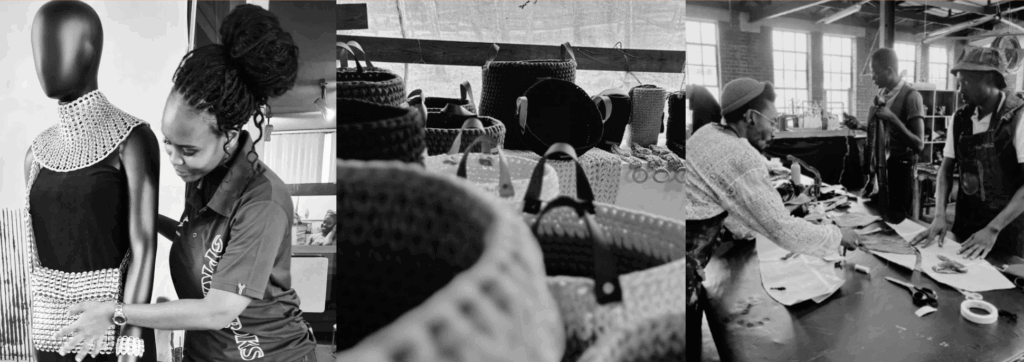
The Arts & Wellbeing program became one of the defining features of TC/ESG25, reminding us that transformation is not only about systems and policies, but also about how science, art, and wellbeing are deeply connected. For transformation to take root, these elements must be entangled, and in Johannesburg we saw how seamlessly this can be done.
Acknowledgment
The Arts & Wellbeing strand of the program at TC/ESG25 was thoughtfully curated by Andrea Marais-Potgieter and Jessica Wu, whose vision and dedication shaped this component of the gathering. Their work brought together diverse artistic practices and wellbeing experiences, creating spaces that deepened connection and reflection throughout the event.
